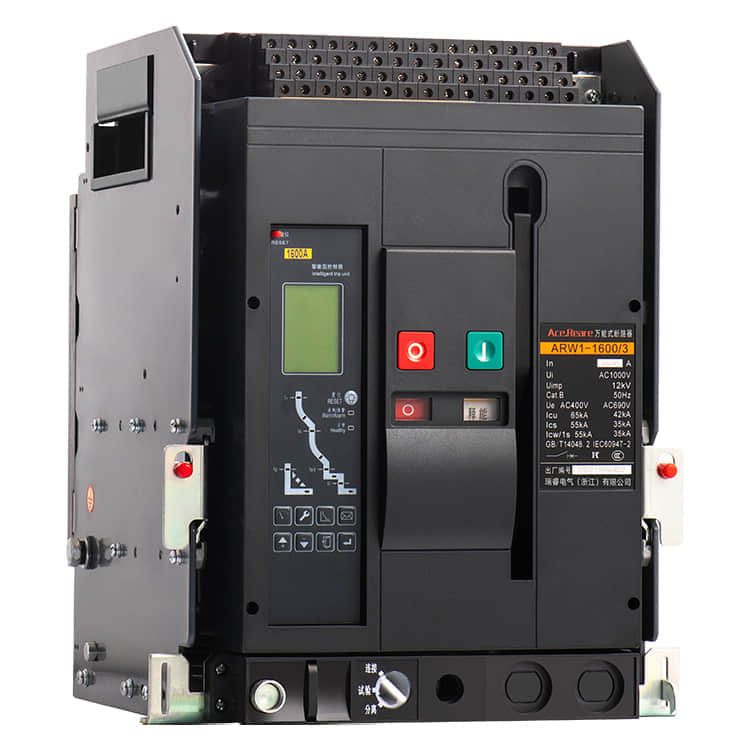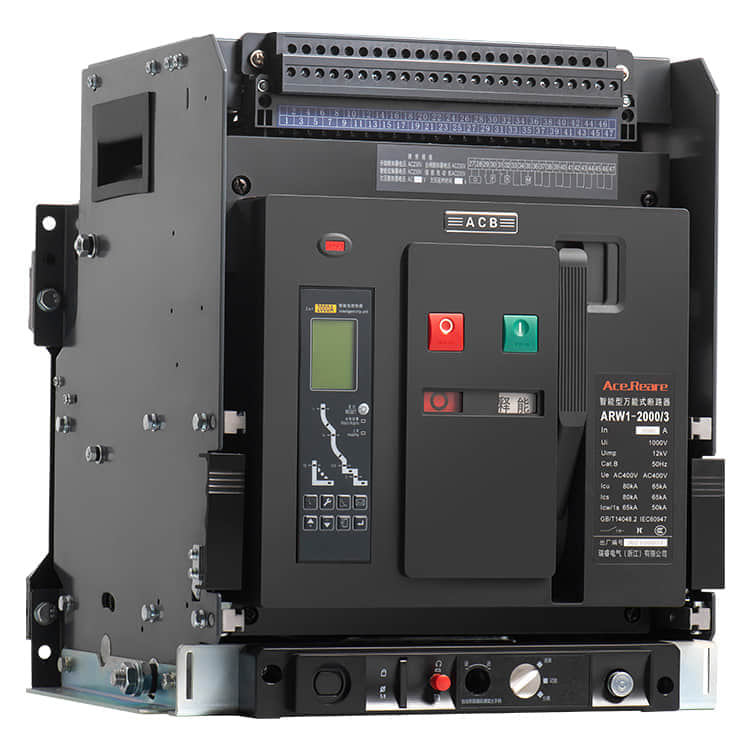Introduction

ACB (Air Circuit Breaker) drawer type breakers are a crucial component of electrical distribution systems, playing a vital role in safeguarding equipment and ensuring the smooth operation of various industries. With their advanced features and numerous benefits, these breakers have become an integral part of modern electrical installations.

Features of ACB Drawer Type Breakers Modular Design: One of the standout features of ACB drawer type breakers is their modular design. They consist of separate compartments or “drawers” that house different components, such as the circuit breaker itself, trip units, and auxiliary contacts. This modular arrangement makes installation, maintenance, and upgrading much more convenient and efficient. Customizability: ACB drawer type breakers offer a high degree of customizability. Different types of trip units can be easily interchanged based on specific protection requirements. This adaptability ensures that the breaker can be tailored to various applications, ranging from low-voltage installations to heavy-duty industrial environments. Ease of Maintenance: Traditional ACBs often require shutting down the entire system for maintenance or replacement. However, the drawer type design eliminates this inconvenience. When maintenance is needed, the faulty drawer can be simply disconnected and replaced with a new one, minimizing downtime and maximizing operational efficiency. Enhanced Safety: Safety is paramount in electrical systems, and ACB drawer type breakers address this concern effectively. The separation of compartments reduces the risk of accidental contact with live components during maintenance. Additionally, advanced interlocking mechanisms prevent improper insertion or removal of drawers, further enhancing operator safety. Benefits of ACB Drawer Type Breakers Reduced Downtime: ACB drawer type breakers significantly reduce downtime in case of faults or maintenance. The quick and straightforward drawer replacement process ensures that the system can be up and running in minimal time, enhancing overall productivity. Cost Savings: The modular design not only reduces downtime costs but also allows for cost-effective upgrades. Instead of replacing the entire breaker, users can simply upgrade specific components, extending the lifespan of the breaker and optimizing investment. Flexibility: Industries are dynamic, and electrical systems must adapt to changing demands. ACB drawer type breakers offer the flexibility to adjust protection settings or upgrade components without the need for extensive reconfiguration, making them ideal for businesses that evolve over time. Reliability: With their advanced technology and robust construction, ACB drawer type breakers are known for their reliability. Consistent performance leads to fewer unexpected shutdowns, which can have a cascading impact on productivity and product quality. Remote Monitoring and Control: Many ACB drawer type breakers are equipped with modern communication capabilities, allowing for remote monitoring and control. This feature is particularly beneficial for industries with multiple locations, enabling centralized management and proactive maintenance. Conclusion In the realm of electrical distribution, ACB drawer type breakers stand out as versatile, efficient, and reliable components. Their modular design, customizability, and emphasis on safety make them a preferred choice for a wide range of industries. With benefits such as reduced downtime, cost savings, and adaptability, these breakers contribute significantly to the seamless operation of industrial and commercial systems. As technology continues to advance, ACB drawer type breakers are likely to evolve further, enhancing their features and expanding their applications.
